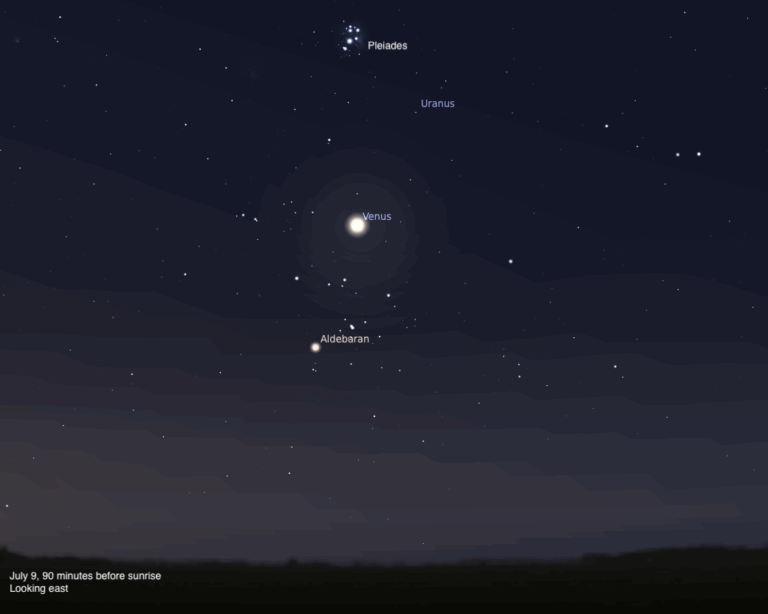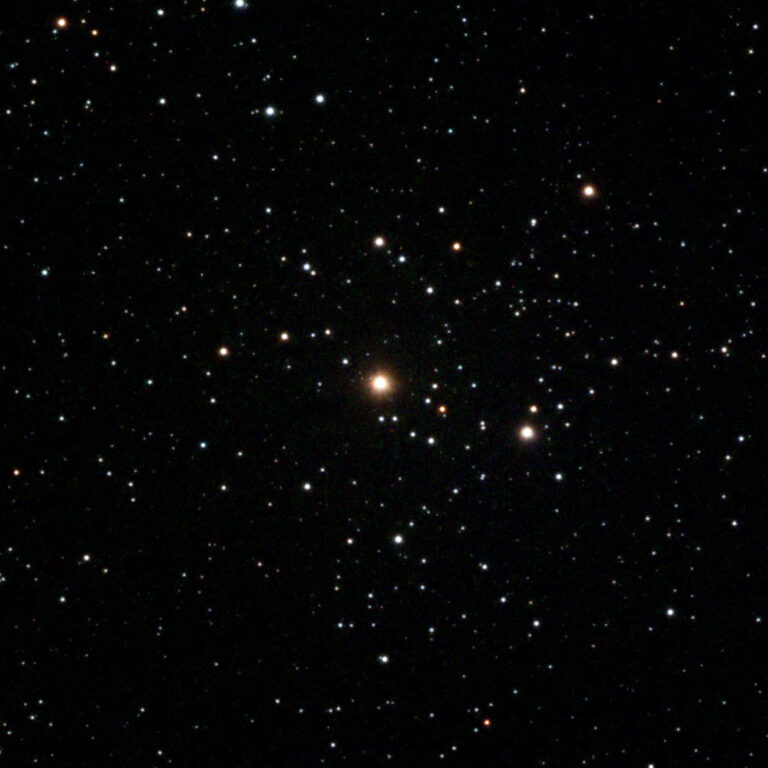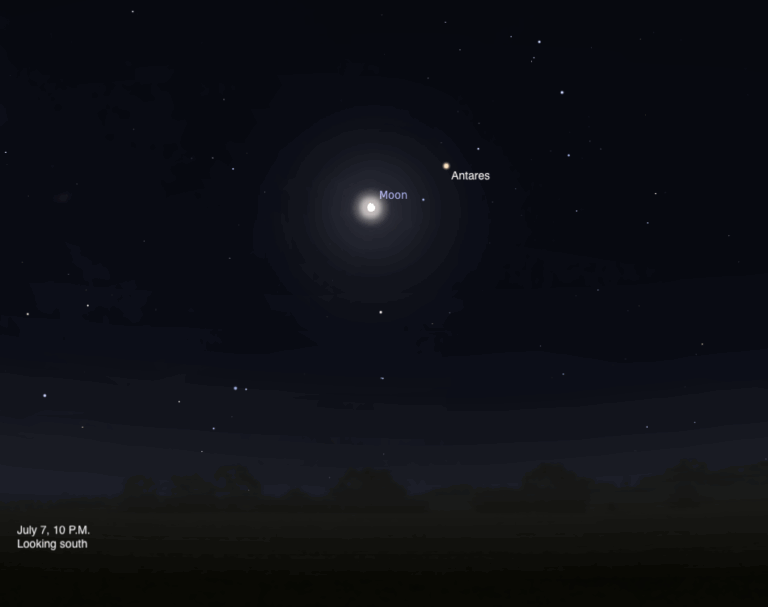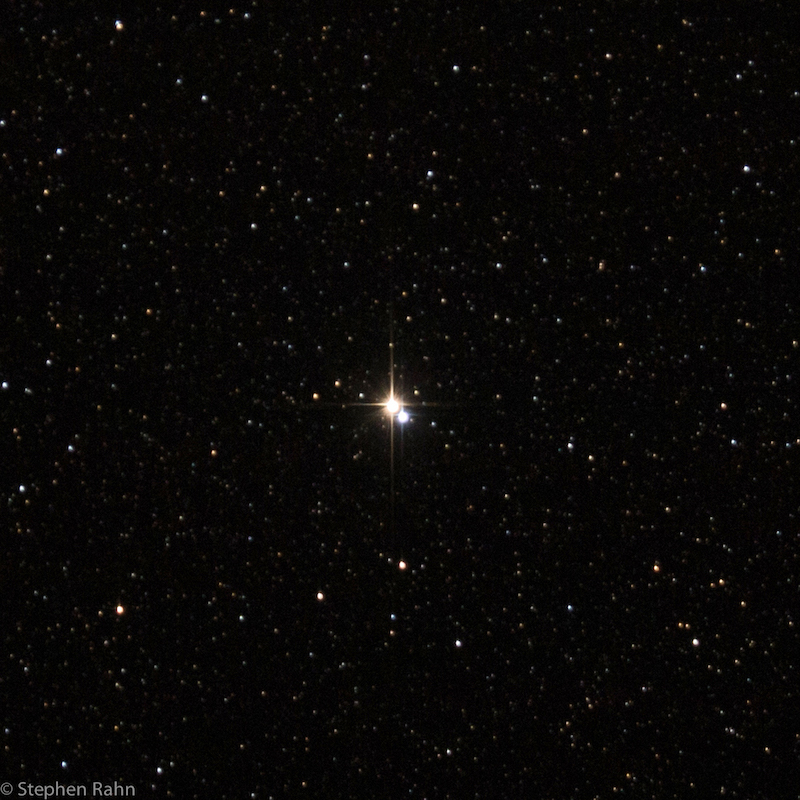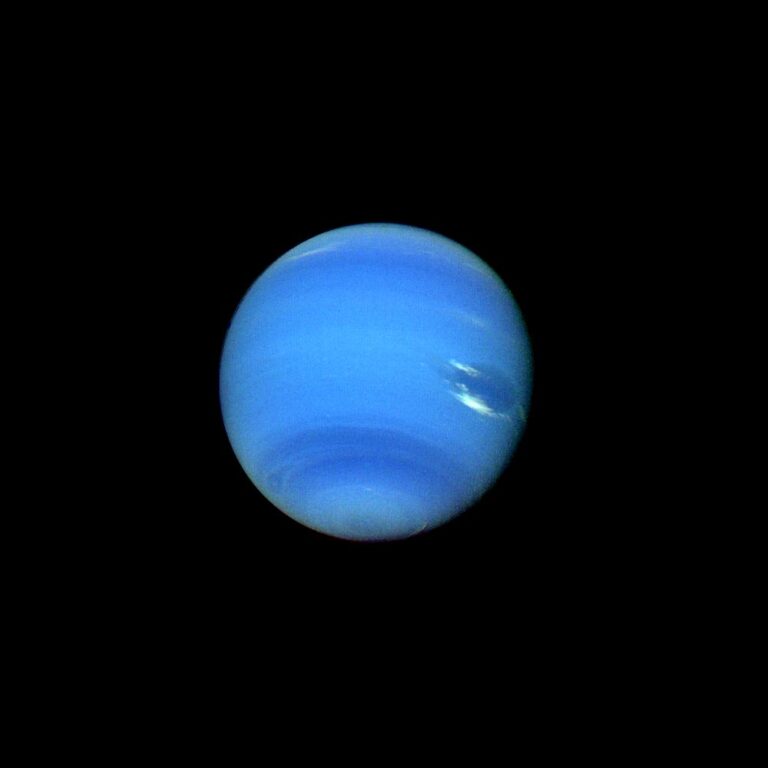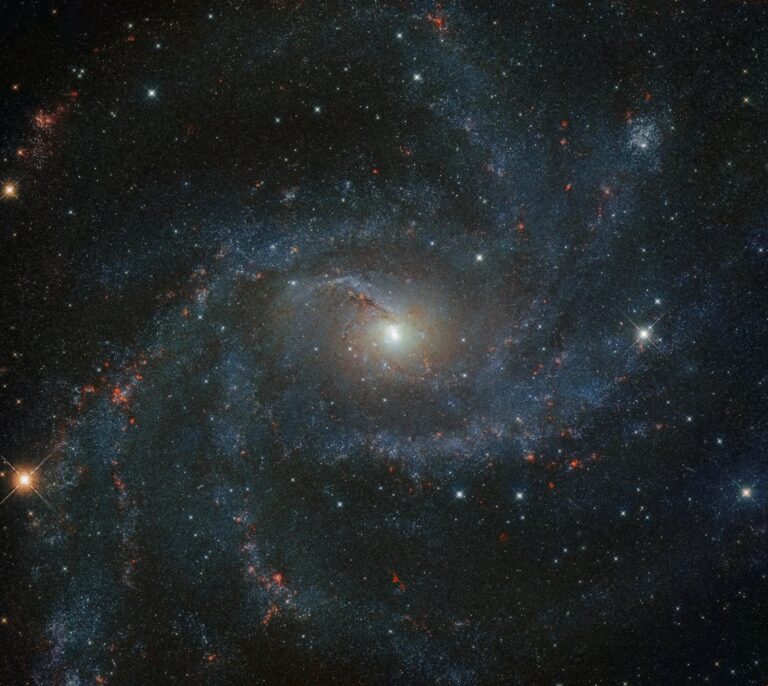Key Takeaways:
Friday, October 28
Look high in the east after darkness falls this week, and you should see autumn’s most conspicuous star group. The Great Square of Pegasus stands out in the evening sky at this time of year. These four almost equally bright stars, which form the body of Pegasus the Winged Horse, mark the square’s corners. The fainter stars that form the rest of this constellation’s shape trail off to the west.
Saturday, October 29
Mars continues to put on a nice show these October evenings. The magnitude 0.4 Red Planet lies among the background stars of Sagittarius and appears nearly 25° high in the south-southwest after darkness falls. A telescope shows the planet’s 8″-diameter disk, which may show a few subtle dark markings during moments of good seeing. At 9 a.m. EDT today, the planet reaches perihelion — its closest approach to the Sun during its 1.88-year orbit — when it lies 128.4 million miles from our star.
Sunday, October 30
Brilliant Venus stands out low in the southwest during evening twilight. The planet lies some 12° above the horizon a half-hour after sunset and sets as twilight comes to a close. At magnitude –4.0, Venus is the brightest object in the evening sky. If you look carefully, you should see magnitude 0.5 Saturn just 3° to Venus’ north (upper right). While Venus is climbing higher and will be an evening fixture throughout this fall and winter, Saturn soon will disappear in the Sun’s glare. Point a telescope at Venus and you’ll see a 14″-diameter disk that appears about 80 percent illuminated. Saturn shows a 15″-diameter disk surrounded by a ring system that spans 35″ and tilts 27° to our line of sight.
Observers who have yet to get their fill of Pluto this year have a great opportunity to track down the distant dwarf planet tonight. The diminutive world lies in northeastern Sagittarius some 0.3° north and a touch west of magnitude 3.8 Omicron (o) Sagittarii. What makes tonight special, however, is that Pluto passes a mere 8″ north of a 9th-magnitude field star. Although binoculars will show you the star, you’ll need an 8-inch or larger scope to spot the magnitude 14.2 planet, which glows 100 times fainter. Plan to hunt for Pluto when it’s highest as soon as the sky grows dark.
New Moon occurs at 1:38 p.m. EDT. At its New phase, the Moon crosses the sky with the Sun and so remains hidden in our star’s glare.
Monday, October 31
If you like observing challenges, head outside this evening without any optical aid. Uranus glows at magnitude 5.7, bright enough to glimpse with the naked eye from under a dark sky. The planet reached opposition and the peak of its 2016 apparition earlier this month, and it remains a fine sight. Around 9 p.m. local daylight time, Uranus lies about halfway from the southeastern horizon to the zenith. The distant world resides in southern Pisces just 2.9° northwest of magnitude 4.8 Mu (m) Piscium. If you can’t see it with your naked eye, or if you live in a light-polluted area, binoculars will bring the planet into view. A telescope reveals the planet’s blue-green disk, which spans 3.7″.
The Moon reaches apogee, the farthest point in its orbit around Earth, at 3:29 p.m. EDT. It then lies 252,688 miles (406,662 kilometers) from Earth’s center.
Tuesday, November 1
Although you’ll need a 6-inch telescope and a dark sky to track down 12th-magnitude Comet Johnson (C/2015 V2), the effort will be worth it this morning. The first-time visitor to the inner solar system resides among the background stars of Canes Venatici, a region that climbs halfway to the zenith in the northeastern sky as dawn breaks. What makes today special is that the comet passes 1° south of the bright spiral galaxy M106. You likely won’t see the solar system object at low power, however. Bump up the magnification to 150x or so and carefully scan for a faint, slightly out-of-round fuzzball.
Wednesday, November 2
A waxing crescent hangs low in the southwestern sky early this evening. Although pretty in its own right, the Moon takes on added luster tonight because of the company it keeps. Our satellite appears 4° above Saturn and 7° to Venus’ upper right. The trio should barely fit in the field of view of 7×50 binoculars.
Thursday, November 3
Although Jupiter passed on the far side of the Sun barely a month ago (on September 26), it has already returned to prominence before dawn. The giant planet rises 2.5 hours before the Sun and climbs about 10° above the eastern horizon by the time twilight starts to paint the sky. Jupiter shines brilliantly at magnitude –1.7 and shows a 31″-diameter disk when viewed through a telescope.
A lone bright star now hangs low in the south at midevening. First-magnitude Fomalhaut — often called “the Solitary One” — belongs to the constellation Piscis Austrinus the Southern Fish. From mid-northern latitudes, it climbs 20° above the horizon at its best. How solitary is Fomalhaut? The nearest 1st-magnitude star to it, Achernar at the southern end of Eridanus the River, lies some 40° away.
Saturday, November 5
The variable star Algol in Perseus reaches minimum brightness around 11:31 p.m. EDT, when it shines at magnitude 3.4. If you start tracking it this evening, you can watch it more than triple in brightness (to magnitude 2.1) by dawn. This eclipsing binary star runs through a cycle from minimum to maximum and back every 2.87 days. Algol remains visible all night, passing nearly overhead around 1 a.m. local daylight time.
Sunday, November 6
Mars lies some 8° to the lower right of the waxing crescent Moon this evening. The two were in conjunction (when Luna passed 5° due north of the Red Planet) early this morning, but both were then below the horizon from North America.
For those areas in the United States and Canada that observe daylight saving time, set your clocks back one hour this morning. The official switch occurs at 2 a.m. daylight time in your local time zone, which becomes 1 a.m. standard time. The switch means sunrise and sunset both arrive an hour earlier today than they did yesterday. So, at least by clock time, the latest sunrise of the year occurred yesterday morning.





